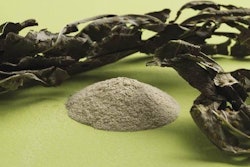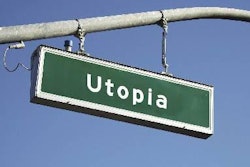I spent the US July 4th holiday weekend with relatives who are doing their best to "go green." To them, this means things like recycling trash; using recycled, washable plastic plates for the picnic rather than paper plates (though they acknowledged that washing the plastic ones consumes water and energy); and serving a variety of foods and beverages labeled organic - from bread to blueberries to red wine made from organic grapes. (But, interestingly, no organic cat food for the furry family member.)
Though I left their home feeling a little guilty that I'm not moving quite as quickly toward a greener lifestyle, I've recently come across information about sustainability that makes me question which efforts and practices are worth it. What is truly sustainable?
Consumer power
US pet owners seeking natural, organic or eco-friendly products tend to be women who are home owners living in larger metropolitan areas, with graduate degrees or higher and household incomes of $150,000 or more. (This comes from the Simmons Market Research Bureau and is cited in Packaged Facts' September 2007 report, Natural, Organic and Eco-Friendly Pet Products in the US .)
My above-mentioned relatives happen to buck several of those trendsbut like other US consumers who buy organic products and make other lifestyle choices generally considered healthier and more sustainable, they do so voluntarily because these issues are important to them.
In Western Europe and other developed regions, the "greening" of food and other product chains is heavily legislated. European Union regulations have banned substances like genetically modified organisms (GMOs) and antibiotic growth promoters in feed and mandated farmers to reduce emissions of greenhouse gases (GHG) like methane, ammonia and nitrous oxide. This legislation, however, has been driven by consumer demand; regulatory experts in Europe often say consumer preferences = political power.
The hidden load
But are consumers - or even manufacturers and producers - well informed about what is and isn't safe and sustainable development? For example, according to a new report from the Hudson Institute's Center for Global Food Issues, grain-fed beef may produce 40% less GHG than pasture-fed beef and be the more sustainable practice. (See http://www.cgfi.org/pdfs/nofollow/beef-eco-benefits-paper.pdf .)
At the Petfood and Nutrition Update Symposium in Solingen, Germany, in June, Holger Rohn of Trifolium (a sustainability consultancy in Friedberg, Germany, www.trifolium.org ) presented examples of the level of resources different types of food production require. Making 1 kg of regular (non-organic) bread takes 42 kg of water, 605 kg of soil and leads to 1 kg of erosion - while producing 1 kg of organic bread uses 40 kg of water, 1,097 kg of soil and 2 kg of erosion, according to Trifolium.
Rohn also provided data on the "hidden material load" of various human activities in Germany - effects such as erosion, earth displacement and unconverted materials that are not readily apparent in food production, the making of clothing, education or housing. In some sectors, especially food and housing, the hidden effects are greater than the known ones: the visible material load of minerals, raw fossil fuels and biological raw materials. Rohn said Germany's hidden material load is higher than Japan's but much smaller than the US's.
Not easy being green
Like Kermit the Frog on the popular children's TV show Sesame Street , consumers and manufacturers alike are finding that it's not easy being green. But given our many finite natural resources and the very real economic, technological and ecological limits to what we can develop, we have to start somewhere. As Rohn commented, to date many organizations, governments and individuals have been acting as if we had four planets - and we know for certain that is not sustainable.



.png?auto=format%2Ccompress&fit=crop&h=167&q=70&w=250)
.png?auto=format%2Ccompress&fit=crop&h=167&q=70&w=250)












